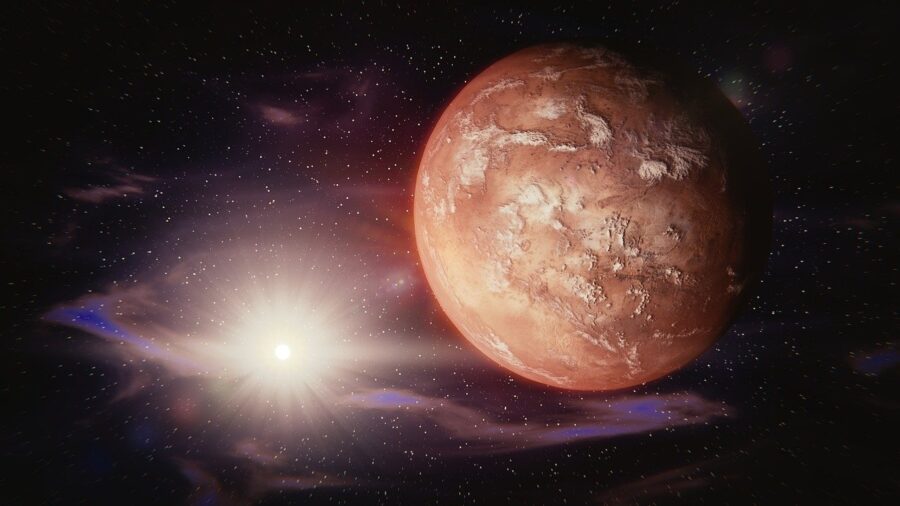Written by Jeffrey Rapaport | published
If you're looking for inspiration for a sci-fi scenario, take note: Scientists recently discovered strange polygonal structures buried beneath the surface of Mars. Cutting-edge developments in space technology have facilitated this discovery, which is an extraordinary discovery from the universe.
It contributes a fascinating new chapter to our understanding of the Martian landscape and its history.
Zhurong excavated beneath the surface of Mars and discovered 16 remarkable polygonal structures.
The Chinese spacecraft Zurong made this discovery, which represents an important milestone in China's space exploration program. In fact, Zurong's Mars adventure is part of China's first mission to land on the red planet.
The Chinese rover was landed and deployed in Utopia Planitia, one of the most important impact basins on the Red Planet. This impressive technology has played a crucial role in revealing mysterious and hidden structures in a particularly relevant section of the Martian landscape.

The crater in question was last traversed more than forty years ago, in 1976, by NASA's Viking 2 spacecraft. It is an area of special interest to scholars, both Chinese and American.
Not only are these polygons located approximately 35 meters underground, but they extend horizontally across approximately 2 kilometers.
Zhurong excavated beneath the surface of Mars and discovered 16 remarkable polygonal structures. Experts consider these formations to be the incredibly ancient result of the freeze-thaw cycle. Mars' previously frozen terrain cracked, a process observed on Earth in regions of permafrost.
However, according to scientists, the polygons resulting from this process on the Red Planet are enormous – much larger than those on Earth.
How did scientists arrive at the hypothesis of freezing and thawing? By consulting data collected from the vehicle's advanced radar system. What I found was astonishing: Not only are these polygons located approximately 35 meters underground, but they extend horizontally across almost two kilometers.
Additional research has revealed fascinating details about the geological and climatic origins of Mars. While volcanic activity has shaped Earth's polygonal structures — such as Northern Ireland's famous Giant's Bridge — Martian polygons likely owe their unusual shapes to sedimentation and thermal processes, excluding the involvement of lava.
Hopefully, these fractures will provide more clues about Mars' climatic past and form points of comparison to the polygons of Utopia Planitia.
Moreover, traces of ancient Martian floods along Utopia Planitia—floods dating back nearly three billion years—attest that the dynamic and diverse Martian landscape is undergoing revolutionary changes. Such an environment would have transformed Mars from a water-rich planet into the barren wasteland we see today.
It would also facilitate the processes of freezing and thawing, i.e. polygonal patterns.
While NASA's Curiosity rover continues to truck, China's Zurong spacecraft has been silent ever since. Presumably this is due to harsh dust storms on Mars – although of course one can't rule out a horror and sci-fi monster either.
The first will soon be exploring terrain marked by massive fractures visible from orbit.
Hopefully, these fractures will provide more clues about Mars' climatic past and form points of comparison to the polygons of Utopia Planitia.
More evidence also suggests that Mars may also have been subject to a frequently variable axial tilt or eccentricity. Drastic changes in the planet's tilt would have led to extreme temperature fluctuations. Scientists suggest that the red plant was tilted as much as forty degrees about five million years ago.
The pre-oblique planet would experience very different seasonal conditions than we observe today.
However, this discovery enriches our understanding of the geological history of Mars and offers new ways to explore the planet's past climate and weather conditions.
source: Nature astronomy

“Infuriatingly humble alcohol fanatic. Unapologetic beer practitioner. Analyst.”
